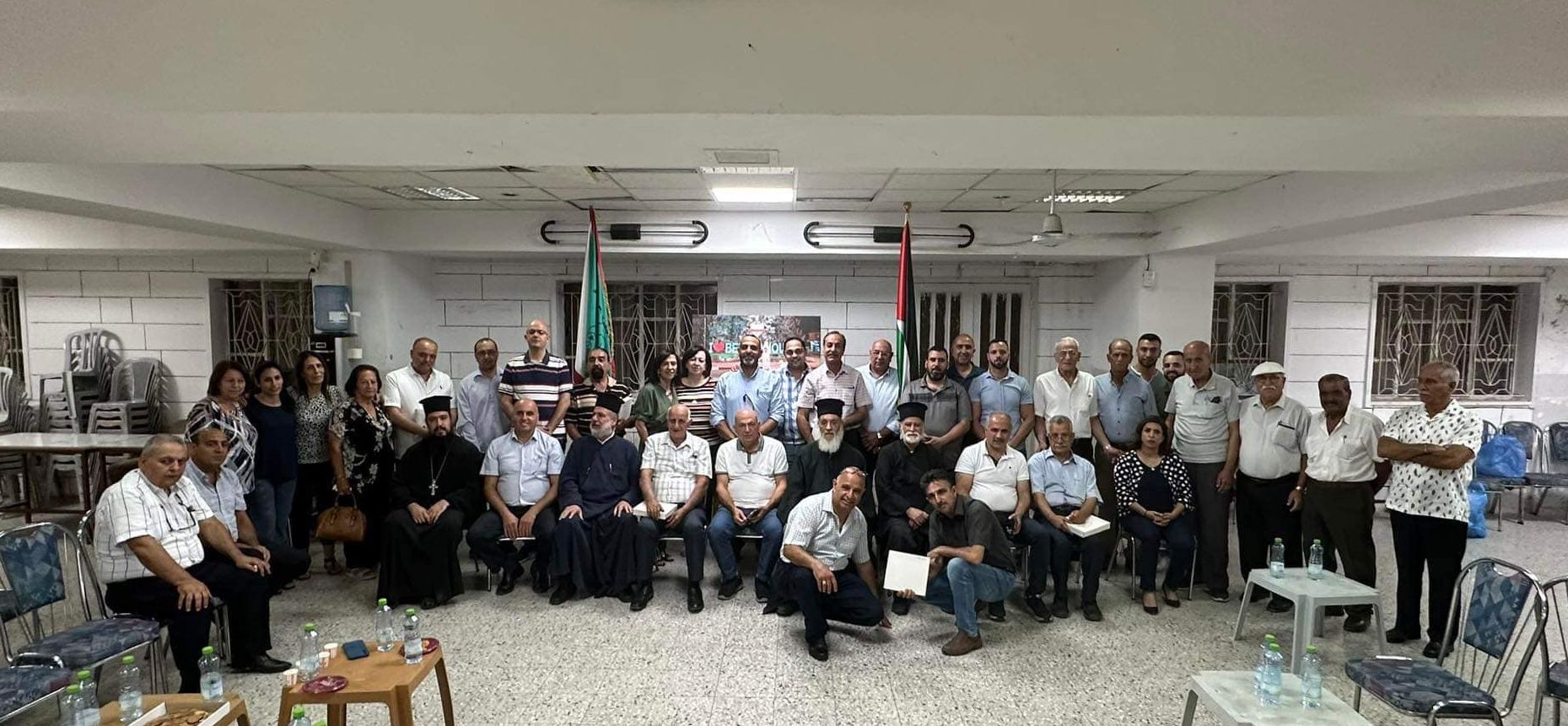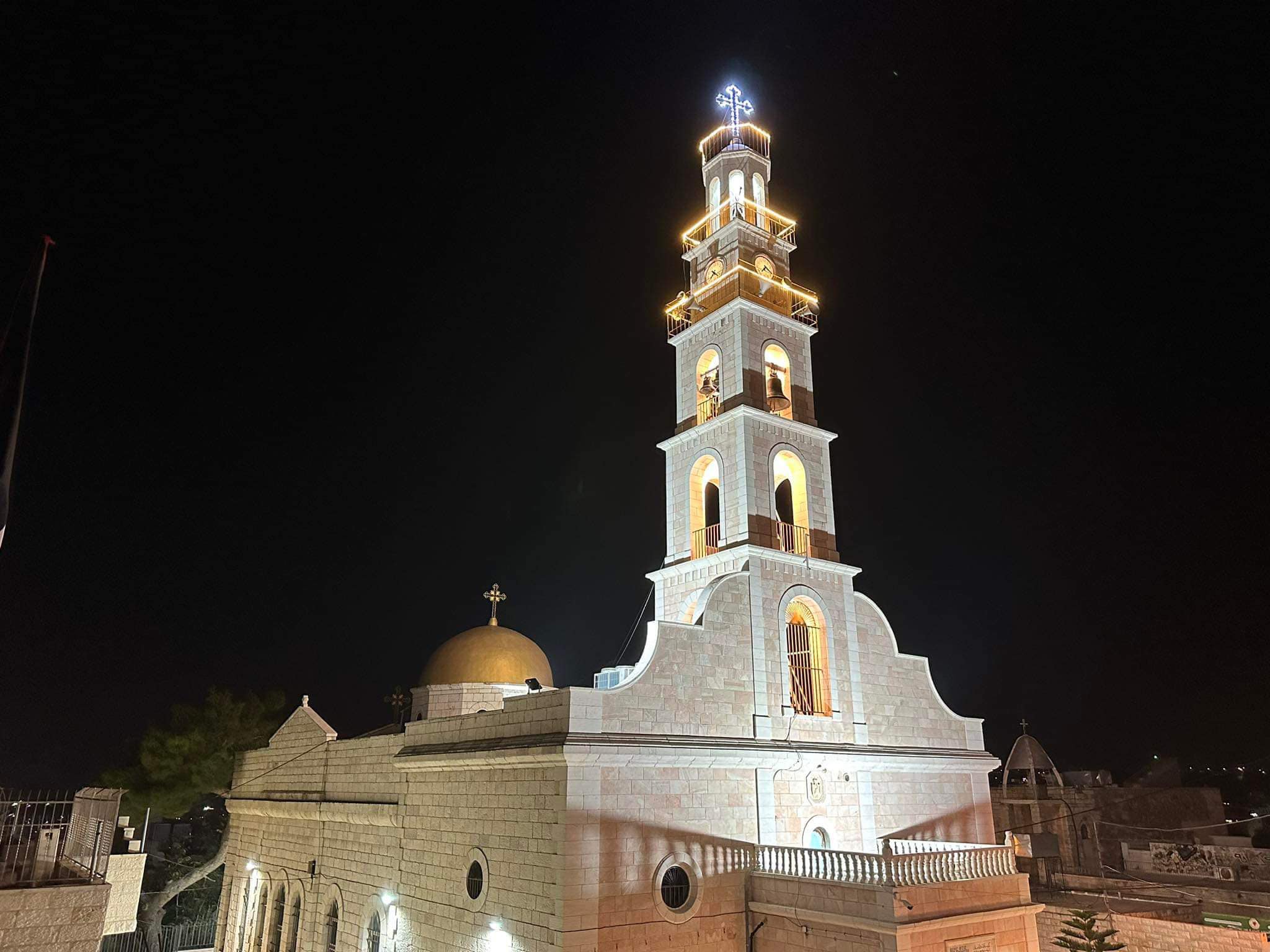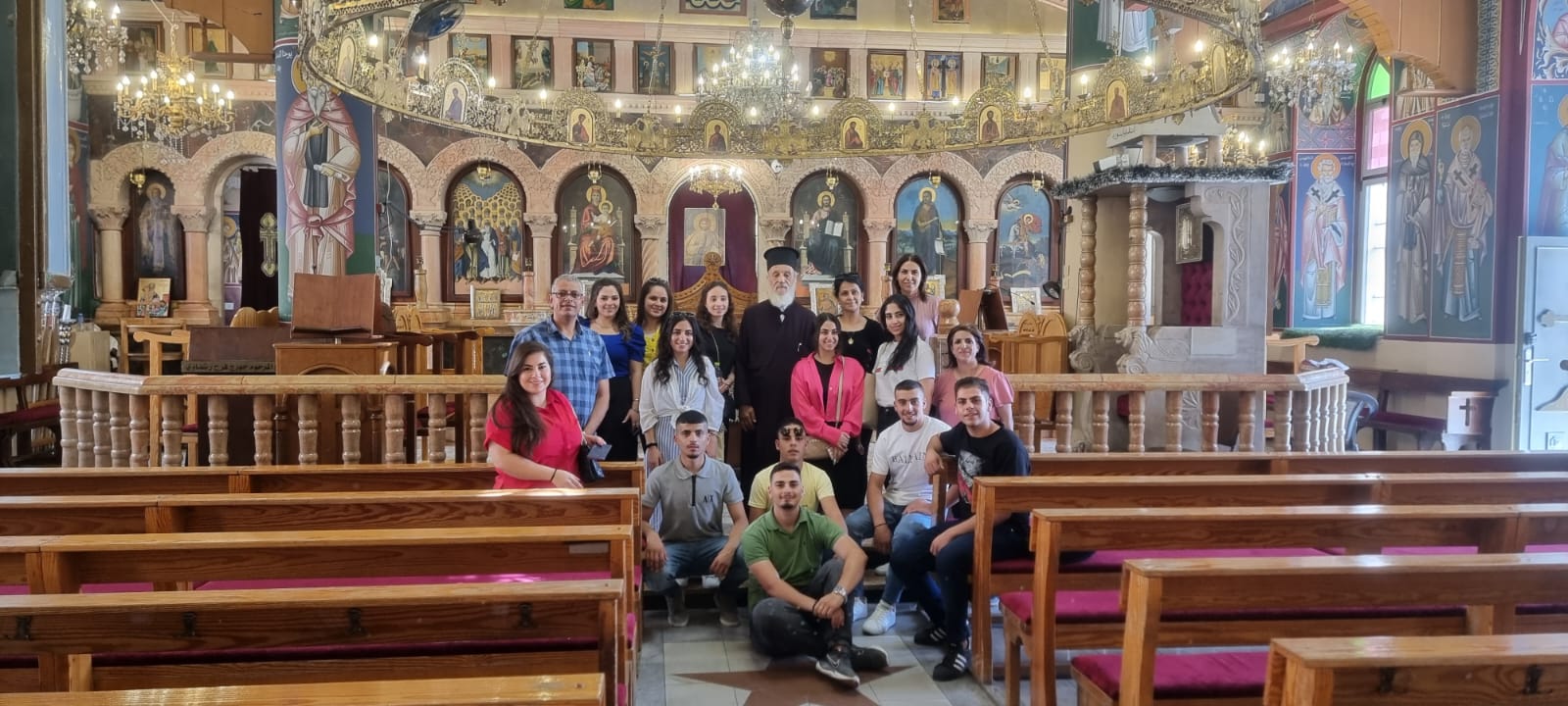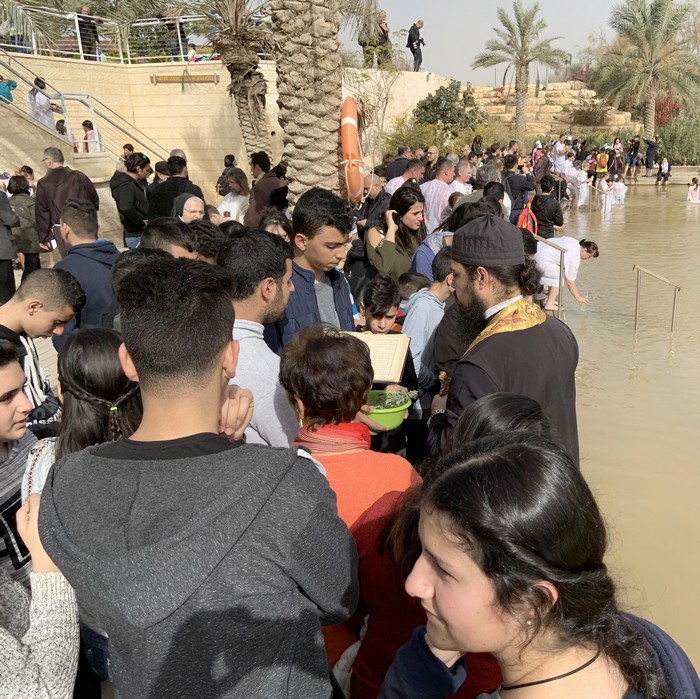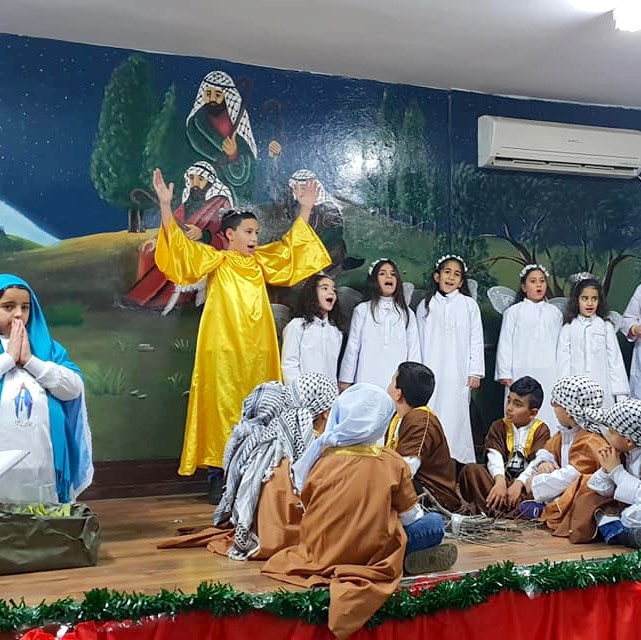The Orthodox Church building contains:
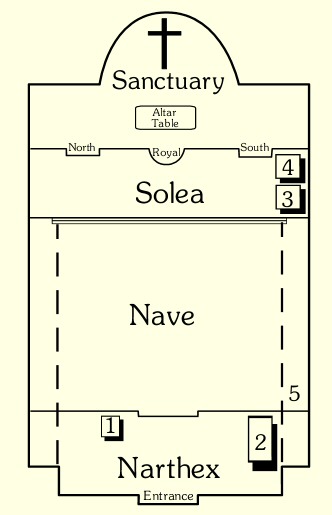 Narthex: it is the connection between the Church and the outside world, and is divided into two sections:
Narthex: it is the connection between the Church and the outside world, and is divided into two sections:
- An external entrance as a courtyard.
- Internal entrance consisting of a large room where the baptismal font.- Nave: The biggest part of the nave is the main body of the church where the people stand during the services. The Nave of an Orthodox Church can vary in shape/size & layout according to the various traditions within the Church. The other part is reserved for the clergy. In front of the iconostas, in the southern section, is the bishop's throne, and other seats for the chanters.
- Above the nave is the dome. In the dome of the church is usually the icon of Christ the Almighty "Ruler of All". Directly hanging below the dome is a circular chandelier with icons of the saints and apostles, called the horos.
- Sanctuary (Altar) - the holy of holies: The area behind the iconostasis reached through the Beautiful Gates or Angel Doors. Within this area is the altar table, which is more often called the holy table or throne. Furthermore, the apse containing the high place at the centre back with a throne for the bishop and the synthronos, or seats for the priests, on either side. The Chapel of Prothesis on the north side where the offerings are prepared in the Proskomedia before being brought to the altar table and the holy vessels are stored. In addition, the Diaconicon on the south side where the vestments are stored.
The Holy Table is in the shape of a square or rectangular, composed of a marble plaque to symbolize Christ. This table is installed on four columns symbolizing the four Evangelists and covered with a piece of white cloth, the Antimens, and the Bible. A small dome is constructed on top of the table.
The walls are normally covered from floor to ceiling with icons of saints, their lives, in addition to stories from the Bible.
Icons:
They are graphic expression of spiritual themes. It reminds us of the events of salvation or historical events from the life of the Church. God the Father cannot be expressed in icons because no one has ever seen the Father. God the Holy Spirit appears either as a dove or tongues of fire, and God the Son became a man, and can be illustrated in His human shape.
Icons are always flat (two dimensional) in order for us, who live in the materialistic world, to understand that the spiritual world of Christ, His mother, angels, and saints live in a mysterious world, which we cannot perceive with our five senses.
Icons are venerated and kissed. The veneration is for the person or persons it representatives. The icons are not idols worshiped by believers, since the worship is for God alone.
There are various symbols in the Byzantine icon including the: colors, geometry, lines and scenes' distribution, as well as the position of the bodies. The icon takes our imagination from the reality of the event in history and place, into the spiritual reality. They are windows to heaven.
The Iconostasis:![]() The iconostasis, also called the τεμπλον/templon. It is a screen or wall between the nave and the sanctuary, which is covered with icons. The Iconostasis has three doors, one in the middle and one on either side. The central one is traditionally called the Royal door and is only used by the clergy. There are times when this gate is closed during the service and the curtain is drawn. The doors on either side are called the Deacons' Doors or Angels' Doors as they often have depicted on them the Archangels Michael and Gabriel. These doors are used by deacons and servers to enter the sanctuary.
The iconostasis, also called the τεμπλον/templon. It is a screen or wall between the nave and the sanctuary, which is covered with icons. The Iconostasis has three doors, one in the middle and one on either side. The central one is traditionally called the Royal door and is only used by the clergy. There are times when this gate is closed during the service and the curtain is drawn. The doors on either side are called the Deacons' Doors or Angels' Doors as they often have depicted on them the Archangels Michael and Gabriel. These doors are used by deacons and servers to enter the sanctuary.
Typically, to the right of the Royal door (as viewed from the nave) is the icon of Christ, then the icon of St John the Baptist; to the left the icon of the Theotokos, always shown holding Christ; and then the icon of the saint(s) to whom the church is dedicated (i.e., the patron).




